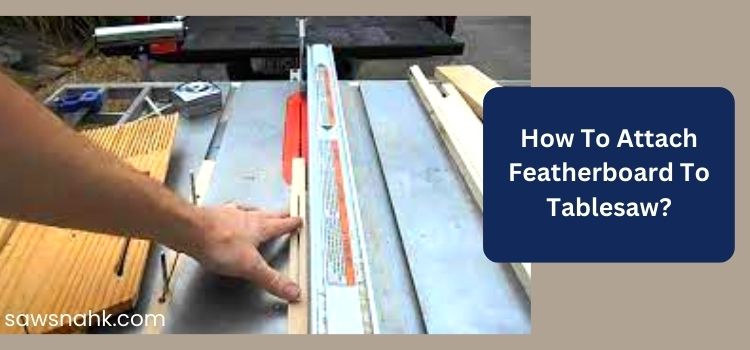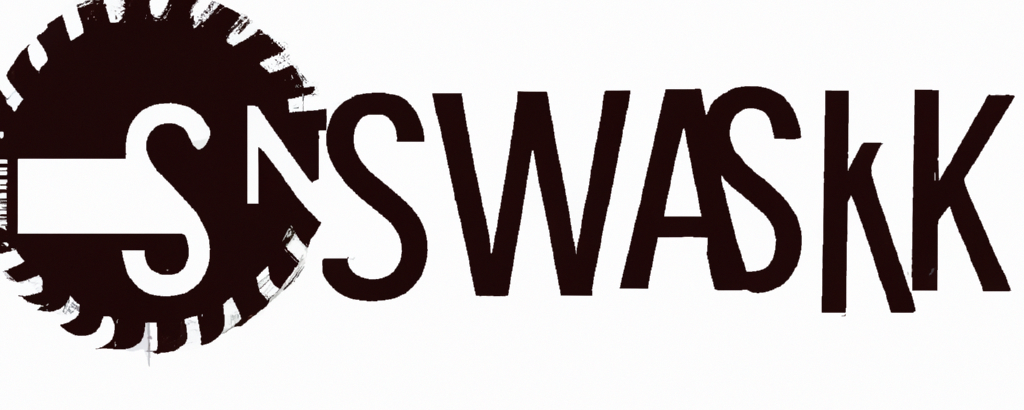How To Attach Featherboard To Tablesaw? 5 Easy Steps

Safety and precision are essential when it comes to table saw woodworking. A feather board can be a handy tool for woodworkers.
A feather board applies pressure to the workpiece to prevent it from rising and causing kickbacks that can be dangerous during cutting. This blog will show you how to attach a positive feather board to your table saw and give some tips for using it.
How to attach a feather board to a table saw
You need to follow the steps to attach a feather board to a table saw:
1. Plywood Fingers and Plywood Cut
Cut the plywood to your desired size. The size will depend on your table saw’s capacity and the type of work you plan to do.
Cut the fingers out of the 1/4″ thick wood. The fingers’ length should be the same as the thickness of your workpiece.
2. The Fingers to the Plywood
Attach the fingers using wood glue to the plywood. To apply constant pressure on the workpiece, ensure that the fingers are evenly spaced along the length.
3. Let the glue dry
Allow enough time for the glue once you’ve glued the fingers to the plywood. The manufacturer will have recommended a drying time.
4. Drill Holes For Screws
Drill a hole in the plywood at the ends of the feather board once it has dried. These holes attach your feather board to the table saw fence.
5. Attach the Featherboard Fence to the Table Saw
Attach the feather board to the fence of the table saw using screws. Position the feather board so that its fingers are facing the workpiece and ready to apply pressure when cutting.
Use a feather board with Your Table Saw.
Let’s look at some tips on how to use the feather board effectively now that you’ve successfully attached it to your table saw:
1. Featherboard Positioning
Place the feather board on the workpiece just in front of the blade. The blade’s pressure will hold the workpiece firmly against the feather board and minimize the risk of kickback.
2. Ideal Featherboard Situations
Use a feather board when ripping thin wood pieces to avoid the material getting caught on the blade, which could cause a dangerous kickback.
3. Check Feather boards Regularly
Check your feather board before each use to ensure it’s in good shape. Check that the feather board’s fingers are in good condition. Damage or wear can compromise its effectiveness.
4. Adjust the Featherboard position
Adjust the feather board to be as close as possible to the workpiece without interfering with the blade. The tight fit will ensure optimal pressure and safe cutting.
5. Avoid Excessive Pressure
The feather board is designed to apply pressure on the workpiece. However, it’s important not to use excessive force as this could cause damage to the material or prevent smooth cutting.
Conclusion:
You have made a significant step in achieving safer and more accurate woodworking by attaching and using the feather board to your table saw.
Follow the instructions in this post to ensure a proper installation, and remember the tips that will make it easier for you to use. After some practice, feather boards will be second nature to you, and you’ll confidently create beautiful projects.
FAQs (Frequently Asked Questions)
Why should I use feather boards on my table saw?
The feather board is an essential safety tool for table saws. It helps to prevent kickbacks and allows you to make more precise cuts. It applies pressure to the workpiece so that it is firmly pressed against the fence and table, reducing the chance of it being thrown by the blade.
Can a feather board replace other safety measures such as a blade guard or riving knife?
No, A feather board is not a substitute for the other safety features on your table saw. It should only be used to complement them. The blade guard and riving knives are two safety features that play different roles when preventing kickbacks and protecting the operator.
Can I use the feather board with other woodworking equipment besides a Table Saw?
Yes, you can use the feather board with other woodworking machines that require cutting or routing, like router tables, bandsaws, and radial-arm saws. The feather board’s main purpose is to secure the workpiece against the fence or table of the tool, preventing unwanted movement while cutting.
